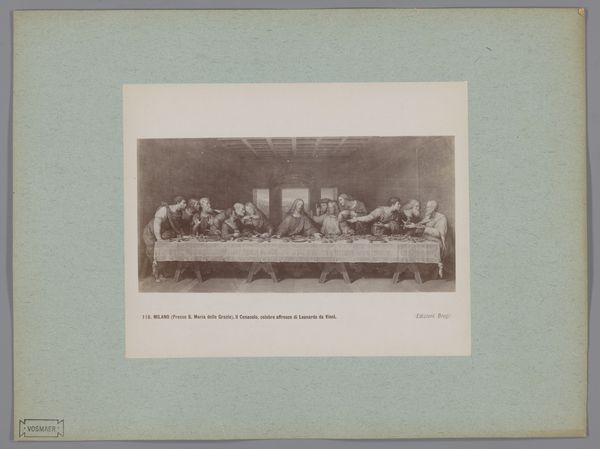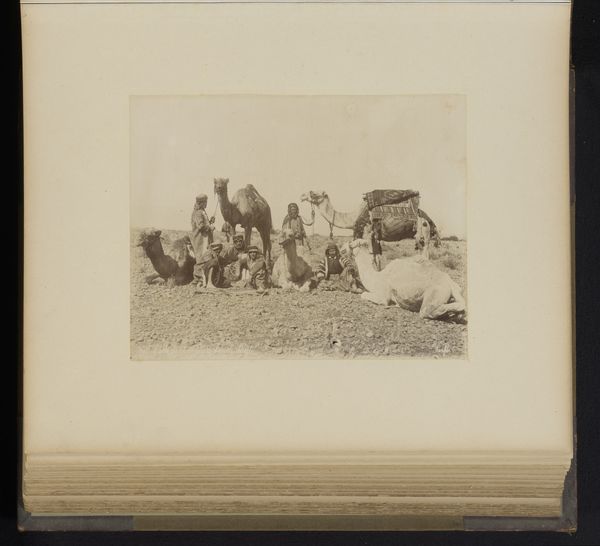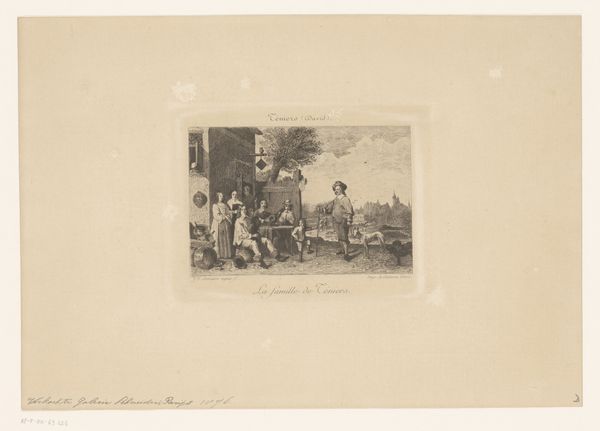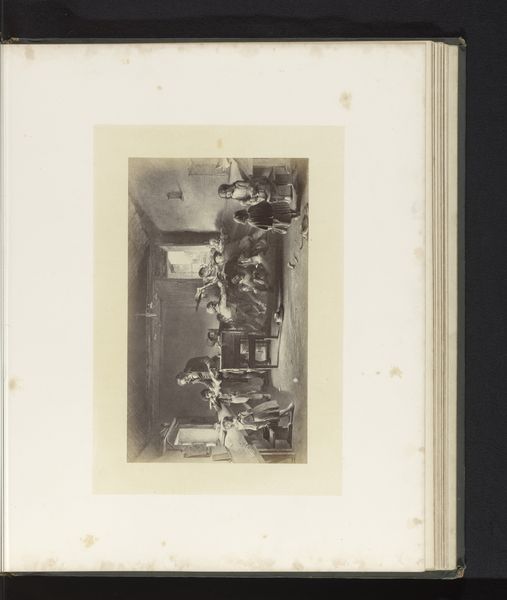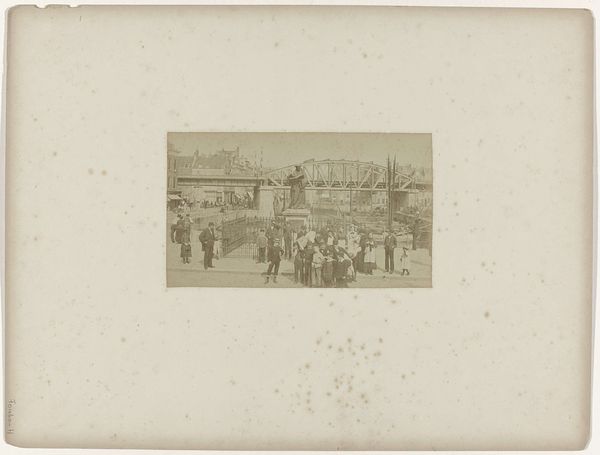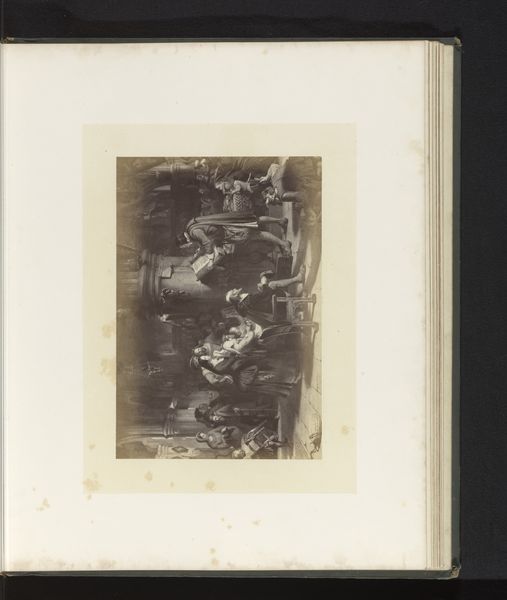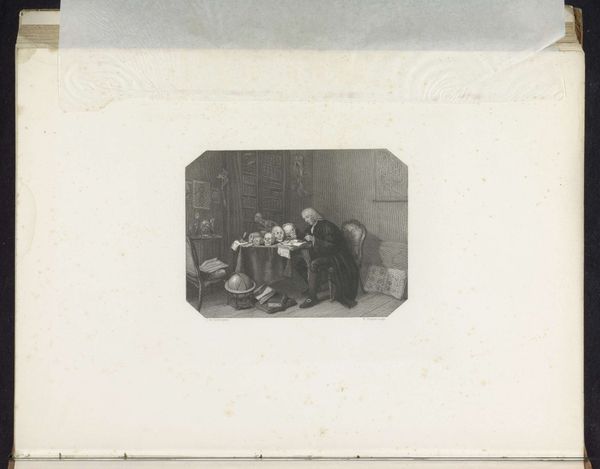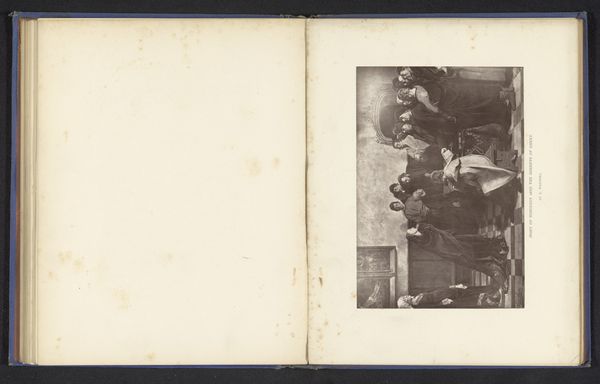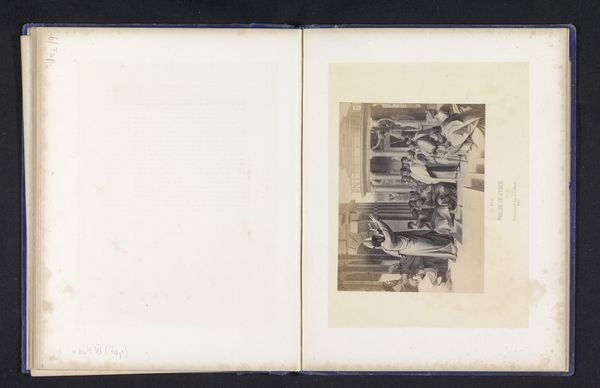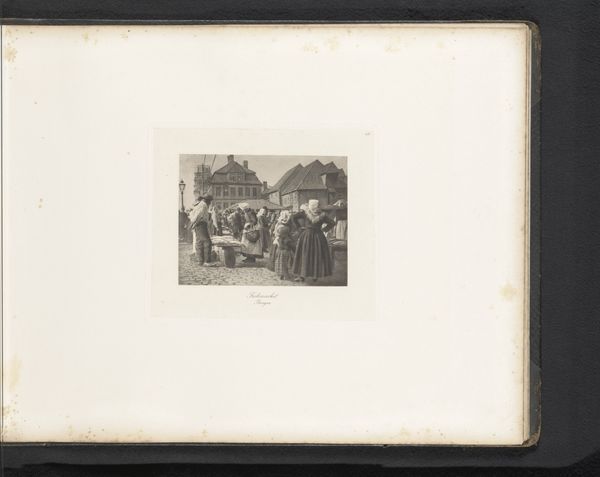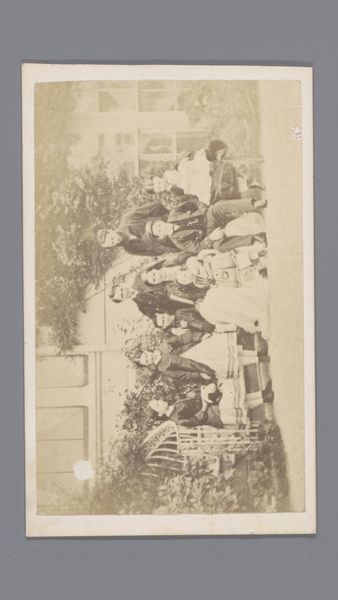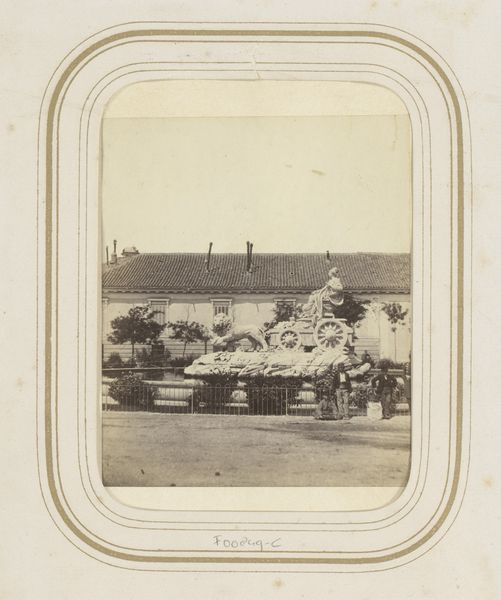
photography, albumen-print
#
portrait
#
photography
#
group-portraits
#
orientalism
#
albumen-print
Dimensions: height 85 mm, height 52 mm
Copyright: Rijks Museum: Open Domain
Curator: Here we have a work titled "Groepsportret van een Indonesisch familie," or Group Portrait of an Indonesian Family, attributed to Woodbury & Page, created sometime between 1857 and 1865. It is an albumen print, a type of early photography. Editor: It’s visually dense, a gathering of figures with intriguing arrangements. The grayscale tones create an antiquated mood. I am immediately drawn to the play of light and shadow on their faces. Curator: Indeed. Albumen prints like this one were produced through a labor-intensive process, involving coating paper with albumen, or egg white, to create a glossy surface, then using a glass negative for printing. This reveals much about the economic structures that supported such endeavors and the commodification of images and representation of colonized peoples. The circulation of such images reinforced certain power dynamics, especially in the colonial context of 19th-century Indonesia. Editor: Focusing on its internal composition, I notice how the photographer has carefully arranged the subjects, contrasting the figures in the foreground with those standing behind. It seems intentional, guiding our eye. The wooden structures behind create an interesting, yet rigid, grid that balances with the organic posing of the individuals. The faces, however, have such strong, contrasting chiaroscuro values! Curator: Certainly, the subjects were strategically composed to conform with Orientalist expectations, even as the photograph might intend to simply document an actual community. Photography became a tool of empire, shaping perceptions of the colonized for audiences back in Europe. The way they present themselves here tells us a lot about that exchange between the artists’ studio, their materials, the sitters, and how Europeans expected to understand and consume depictions of non-Western cultures. Editor: Looking closer, I find a balance, particularly in how their gaze interacts with us, the viewers, constructing the photograph's narrative beyond just visual enjoyment. What are these props behind them? They don't quite fit the "natural" scene suggested by the gravel beneath. This all reads like careful stagecraft. Curator: Right, it's less an innocent snapshot than a commercial construction! It is interesting to remember these artists of the past are implicated in broader economic and political dynamics through material choices. Editor: Seeing the picture this way helps understand that images are seldom mirrors but complex articulations shaped by numerous forces. Curator: Agreed. A photo to examine for its historical and cultural context. Editor: A thought-provoking examination of both subject and artistry!
Comments
No comments
Be the first to comment and join the conversation on the ultimate creative platform.
